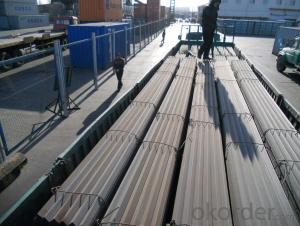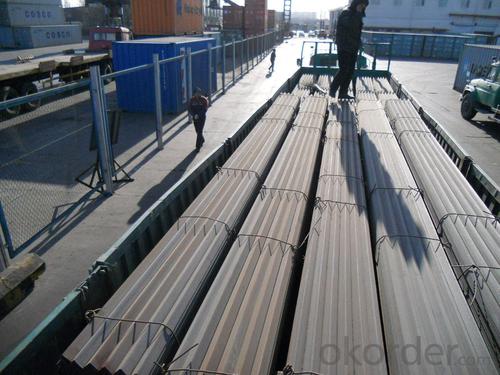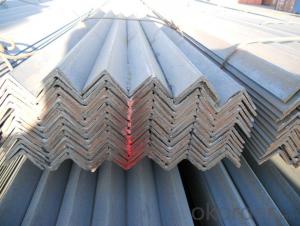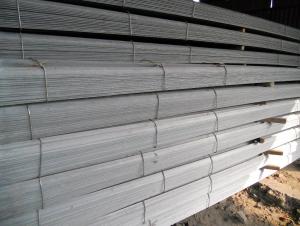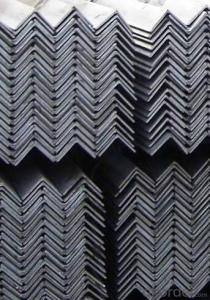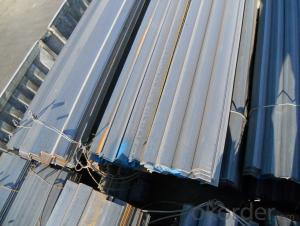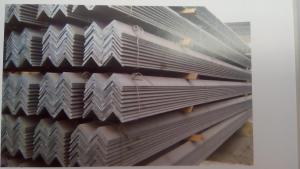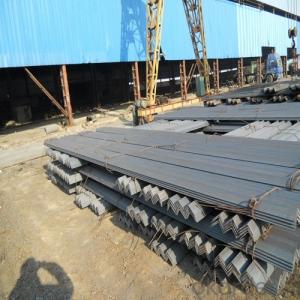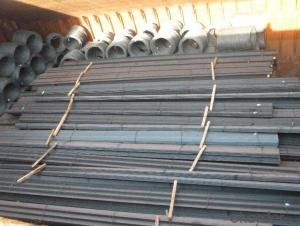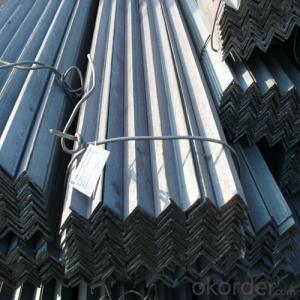Hot Rolled Steel Equal Angle Bar Unequal Angle Bar JIS GB EN DIN ASTM
- Loading Port:
- Tianjin
- Payment Terms:
- TT OR LC
- Min Order Qty:
- 25 m.t.
- Supply Capability:
- 30000 m.t./month
OKorder Service Pledge
OKorder Financial Service
You Might Also Like
Specification
Product Description:
OKorder is offering Hot Rolled Steel Equal Angle Bar Unequal Angle Bar JIS GB EN DIN ASTM at great prices with worldwide shipping. Our supplier is a world-class manufacturer of steel, with our products utilized the world over. OKorder annually supplies products to European, North American and Asian markets. We provide quotations within 24 hours of receiving an inquiry and guarantee competitive prices.
Product Applications:
Hot Rolled Steel Equal Angle Bar Unequal Angle Bar JIS GB EN DIN ASTM are ideal for structural applications and are widely used in the construction of buildings and bridges, and the manufacturing, petrochemical, and transportation industries.
Product Advantages:
OKorder's Hot Rolled Steel Equal Angle Bar Unequal Angle Bar JIS GB EN DIN ASTM are durable, strong, and resist corrosion.
Main Product Features:
· Premium quality
· Prompt delivery & seaworthy packing (30 days after receiving deposit)
· Corrosion resistance
· Can be recycled and reused
· Mill test certification
· Professional Service
· Competitive pricing
Product Specifications:
Specifications of Angle Steel
1. Invoicing on theoretical weight or actual weight as customer request
2. Length: 6m, 9m, 12m as following table
3. Sizes
Sizes: 25mm-250mm | ||
a*t | ||
25*2.5-4.0 | 70*6.0-9.0 | 130*9.0-15 |
30*2.5-6.6 | 75*6.0-9.0 | 140*10-14 |
36*3.0-5.0 | 80*5.0-10 | 150*10-20 |
38*2.3-6.0 | 90*7.0-10 | 160*10-16 |
40*3.0-5.0 | 100*6.0-12 | 175*12-15 |
45*4.0-6.0 | 110*8.0-10 | 180*12-18 |
50*4.0-6.0 | 120*6.0-15 | 200*14-25 |
60*4.0-8.0 | 125*8.0-14 | 250*25 |
Angle specifications with the side length of the size and edge thickness. At present, the domestic steel specifications for 2 - 20 cm in length, number of numbers, the same horn steel often have 2 - 7 different edge thickness. The actual size and inlet angle marked on both sides of the thickness and indicate the relevant standards. The general length of more than 312.5px for large angle steel, 312.5px - 125px for the medium angle, length of 125px for smallangle.
Inlet and outlet angle steel orders generally required the use specifications in the steel,carbon structural steel grades as appropriate. Is the angle in addition to standard number, nospecific composition and performance series.
Angle steel delivery length is divided into fixed length, size two, domestic steel length range is3 - 9m, 4 12M, 4 19m, 6 19m four range according to different specifications. Japanese steellength ranges from 6 to 15m.
Section of unequal angle height according to the long edge of the width to calculate the non equilateral angle steel. Refer to section angle and side length is not equal to the steel. Is a kind of angle steel. The length from 25mm * 16mm to 200mm * l25mm. By the hot rolling mill rolling in. General scalene angle steel specifications: thickness of 4-18mm / 50*32-- / 200*125
Equilateral angle steel is widely used in all kinds of metal structures, bridges, machinery manufacturing and shipbuilding industry, all kinds of architectural and engineering structures,such as beams, bridges, towers, hoisting and conveying machinery, ships, industrial furnace,reactor, container frame and warehouse etc.
FAQ:
Q1: Why buy Materials & Equipment from OKorder.com?
A1: All products offered byOKorder.com are carefully selected from China's most reliable manufacturing enterprises. Through its ISO certifications, OKorder.com adheres to the highest standards and a commitment to supply chain safety and customer satisfaction.
Q2: How do we guarantee the quality of our products?
A2: We have established an advanced quality management system which conducts strict quality tests at every step, from raw materials to the final product. At the same time, we provide extensive follow-up service assurances as required.
Q3: How soon can we receive the product after purchase?
A3: Within three days of placing an order, we will begin production. The specific shipping date is dependent upon international and government factors, but is typically 7 to 10 workdays.
Q4: What makes stainless steel stainless?
A4: Stainless steel must contain at least 10.5 % chromium. It is this element that reacts with the oxygen in the air to form a complex chrome-oxide surface layer that is invisible but strong enough to prevent further oxygen from "staining" (rusting) the surface. Higher levels of chromium and the addition of other alloying elements such as nickel and molybdenum enhance this surface layer and improve the corrosion resistance of the stainless material.
Q5: Can stainless steel rust?
A5: Stainless does not "rust" as you think of regular steel rusting with a red oxide on the surface that flakes off. If you see red rust it is probably due to some iron particles that have contaminated the surface of the stainless steel and it is these iron particles that are rusting. Look at the source of the rusting and see if you can remove it from the surface.
Images:
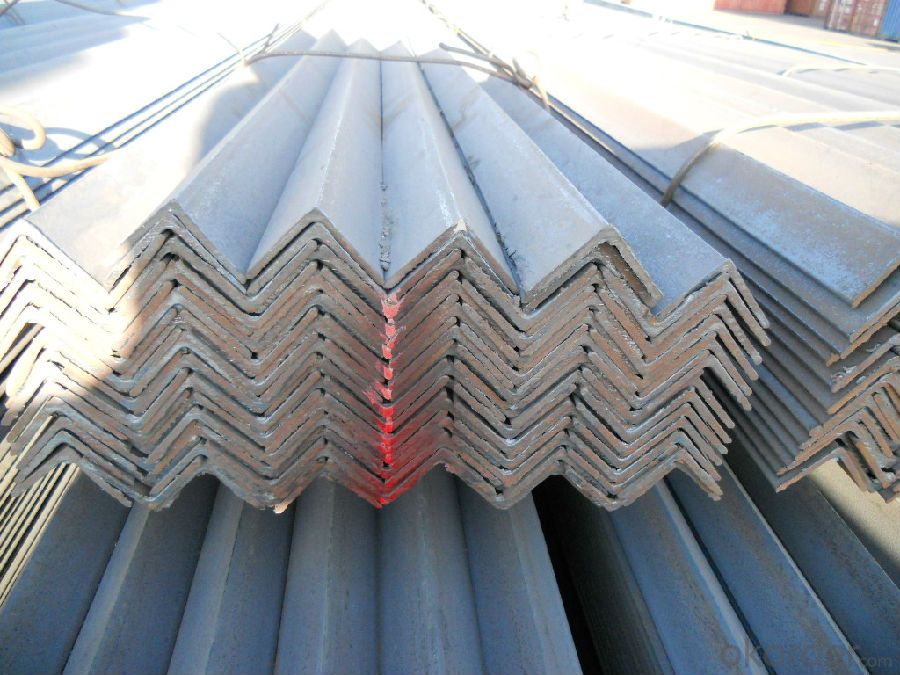
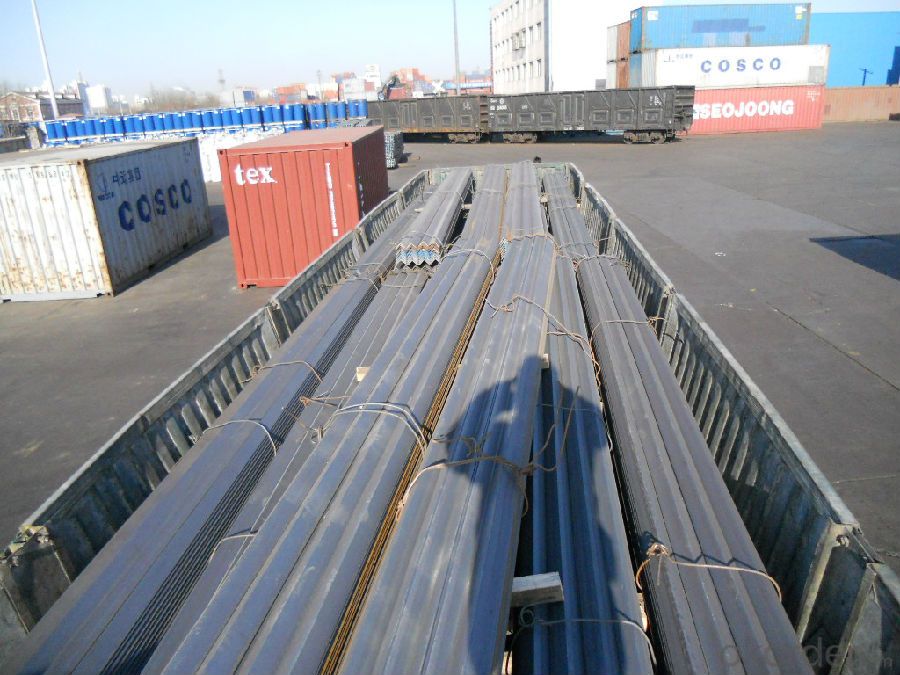
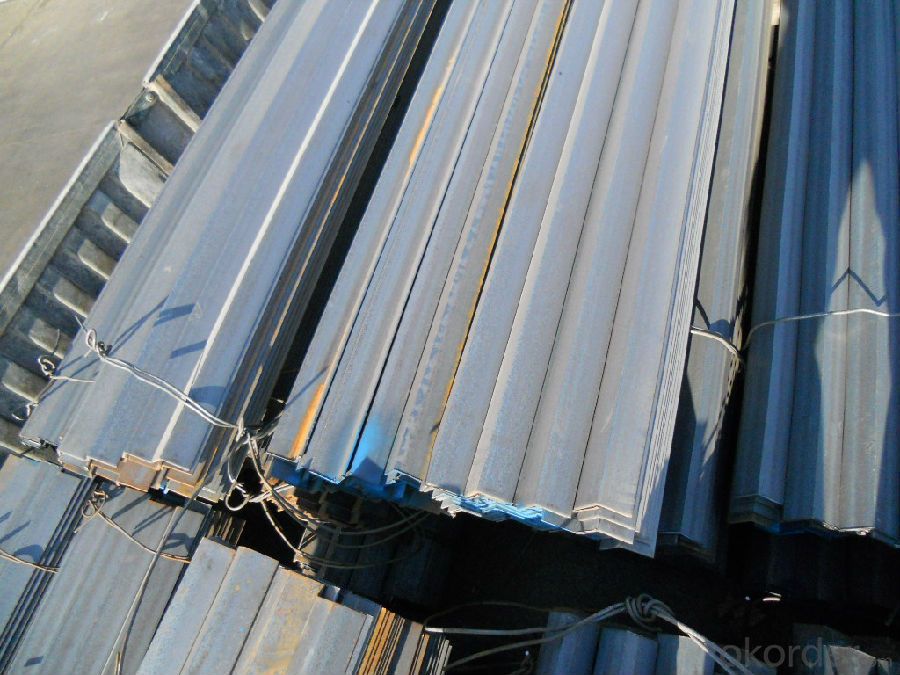
- Q: Can steel angles be used for architectural detailing?
- Yes, steel angles can be used for architectural detailing. Steel angles are versatile structural elements that can be used in various architectural applications. They provide stability and support to structures and can be used for framing, bracing, and reinforcing purposes. Steel angles can be seen in architectural details such as window frames, door frames, staircases, and handrails, among others. They offer strength and durability, making them suitable for both interior and exterior architectural designs. Additionally, steel angles can be easily customized and fabricated to meet specific design requirements, allowing architects to create unique and aesthetically pleasing architectural details.
- Q: What is the typical ductility of steel angles?
- The typical ductility of steel angles can vary depending on the specific grade and composition of the steel. However, in general, steel angles have good ductility due to the inherent properties of steel, which allows them to be easily bent or deformed without breaking.
- Q: Galvanized steel angles under what conditions?
- Humid environment
- Q: How do steel angles compare to wooden or concrete structural elements?
- Steel angles possess several advantages over wooden or concrete structural elements. Firstly, their exceptional strength and durability are well-known. They have the ability to bear heavy loads and resist deformation, making them ideal for supporting large structures or bridges. In contrast, wooden elements are susceptible to rot, warping, and degradation over time, while concrete elements may develop cracks or suffer from corrosion. Moreover, steel angles offer a high level of versatility in terms of design and construction. They can be easily fabricated into various shapes and sizes, allowing for customized solutions to meet different structural needs. This flexibility is not easily attainable with wooden or concrete elements, as they are constrained by natural properties and construction techniques. Furthermore, steel angles provide excellent fire resistance compared to highly flammable wooden elements. Steel does not burn, and its structural integrity remains intact even in high-temperature environments. While concrete also offers fire resistance, steel angles have the added advantage of being lightweight, reducing the overall load on the structure. Another significant benefit of steel angles is their resistance to pests, such as termites or rodents, which can cause severe damage to wooden structures. Steel is impervious to these threats, ensuring long-term stability and reducing maintenance costs. However, there are also some drawbacks to using steel angles. One of the main concerns is the potential for corrosion, particularly in environments with high moisture or chemical exposure. Regular maintenance, including the application of protective coatings or galvanization, is necessary to prevent the formation of rust and maintain the structural integrity of the steel. Moreover, steel angles tend to have a higher initial cost compared to wooden elements. However, their long-term durability and reduced maintenance requirements often result in cost savings over time. In conclusion, steel angles offer numerous advantages over wooden or concrete structural elements, including superior strength, versatility, fire resistance, pest resistance, and long-term durability. However, it is important to consider factors such as corrosion prevention and upfront costs when deciding on the most suitable structural material for a specific project.
- Q: Can steel angles be used for ladder rungs?
- Ladder rungs can indeed utilize steel angles, as they boast strength and durability, making them a frequent choice in construction and fabrication. Utilizing steel angles as rungs ensures a solid and secure surface for ladder climbing. Nonetheless, it is crucial to consider the precise requirements and regulations for ladder rungs, including dimensions, spacing, and anti-slip properties. These factors guarantee user safety and ladder stability. It is advisable to consult applicable safety guidelines and standards prior to employing steel angles as ladder rungs.
- Q: Are steel angles suitable for coastal or saltwater environments?
- Steel angles can indeed be used in coastal or saltwater environments, but it is essential to consider the steel type and implement proper protection measures for durability and resistance against corrosion. Stainless steel angles, especially those made from marine grade stainless steel like 316 or 316L, are highly regarded for their outstanding resistance to corrosion in saltwater environments. These angles contain higher levels of chromium and molybdenum, which offer superior protection against rust and corrosion caused by exposure to saltwater and other harsh elements. Moreover, additional protective coatings or treatments such as galvanization or epoxy coating can be applied to steel angles to further enhance their resistance to corrosion in coastal or saltwater settings. These coatings establish a barrier between the steel and the corrosive elements, preventing direct contact and reducing the risk of rust or corrosion. To determine the most appropriate steel type and protective measures for a specific project in coastal or saltwater areas, it is crucial to consult with structural engineers, architects, or steel suppliers who specialize in such applications. Regular maintenance and inspections play a vital role in promptly identifying any signs of corrosion or damage and addressing them to ensure the longevity and safety of steel angles in coastal or saltwater environments.
- Q: How do you calculate the stability of a steel angle column?
- To calculate the stability of a steel angle column, a few key factors need to be considered. Firstly, the slenderness ratio of the column, which is the ratio of its effective length to its least radius of gyration, must be determined. This can be calculated using the formula: Slenderness ratio = (Effective length of column) / (Least radius of gyration) The least radius of gyration can be calculated using the dimensions of the angle section. For a steel angle, the least radius of gyration can be approximated as the average of the two legs of the angle section divided by the square root of 3. Once the slenderness ratio is determined, it is important to check whether the column is long or short. If the slenderness ratio is less than a critical value, typically around 50 for an angle column, it is considered short and the stability is primarily governed by its strength. In this case, the column can be designed based on its capacity to resist axial compression and flexural buckling. However, if the slenderness ratio exceeds the critical value, the column is considered long and its stability is primarily governed by its ability to resist lateral-torsional buckling. In such cases, additional calculations and considerations must be made to ensure the column's stability. For long angle columns, the critical load at which lateral-torsional buckling may occur can be calculated using various formulas and methods, such as the Euler formula, the Perry-Robertson formula, or finite element analysis. These calculations take into account various parameters such as the column's moment of inertia, modulus of elasticity, and the length of the column. It is important to note that stability calculations for steel angle columns can be complex and require expertise in structural engineering. It is recommended to consult with a qualified professional or refer to relevant design codes and standards, such as the American Institute of Steel Construction (AISC) Manual, for accurate and reliable calculations.
- Q: What are the different types of steel angle profiles?
- There are several different types of steel angle profiles, including equal angle, unequal angle, L-shaped angle, and structural angle. Each profile has its own specific dimensions and uses in various applications.
- Q: What are the different types of connections used for steel angles in residential applications?
- There are several different types of connections used for steel angles in residential applications. Some of the most commonly used ones include: 1. Welded connections: This is the most common type of connection used for steel angles. It involves welding the angle to the adjacent structural members, such as beams or columns. Welded connections provide excellent strength and rigidity, making them ideal for residential applications. 2. Bolted connections: Bolted connections involve using bolts and nuts to secure the steel angle to the adjacent members. This type of connection is often used when the angle needs to be easily removable or adjustable. Bolted connections are less rigid than welded connections but still provide sufficient strength for residential applications. 3. Clip connections: Clip connections are typically used to connect steel angles to wood or other non-steel materials. They involve using clips or brackets that are attached to the angle and then fastened to the adjacent material using screws or nails. Clip connections are commonly used in residential framing applications. 4. Gusset plate connections: Gusset plate connections are used when two steel angles need to be connected at a joint. A gusset plate, which is a flat plate of steel, is welded or bolted to the angles to provide additional support and rigidity. This type of connection is often used in residential roof trusses and other structural applications. 5. Cleat connections: Cleat connections involve using a steel plate, called a cleat, that is bolted or welded to the steel angle and the adjacent member. Cleat connections are commonly used when the angle needs to be attached to a horizontal member, such as a floor or roof joist. These are just a few examples of the different types of connections used for steel angles in residential applications. The choice of connection type will depend on factors such as the structural requirements, ease of installation, and the type of materials being connected.
- Q: Can steel angles be used in architectural or decorative applications?
- Yes, steel angles can be used in architectural or decorative applications. They are versatile and can be shaped and finished in various ways to create unique and aesthetically pleasing designs. Steel angles are commonly used for structural support, but they can also be utilized as decorative accents, such as in railings, door frames, or furniture.
Send your message to us
Hot Rolled Steel Equal Angle Bar Unequal Angle Bar JIS GB EN DIN ASTM
- Loading Port:
- Tianjin
- Payment Terms:
- TT OR LC
- Min Order Qty:
- 25 m.t.
- Supply Capability:
- 30000 m.t./month
OKorder Service Pledge
OKorder Financial Service
Similar products
Hot products
Hot Searches
Related keywords
